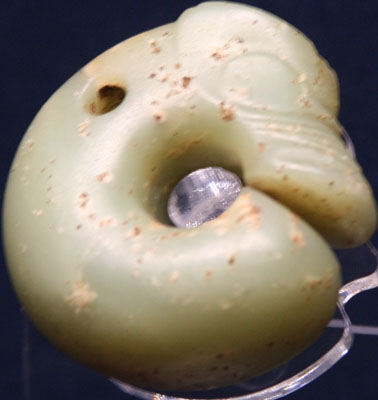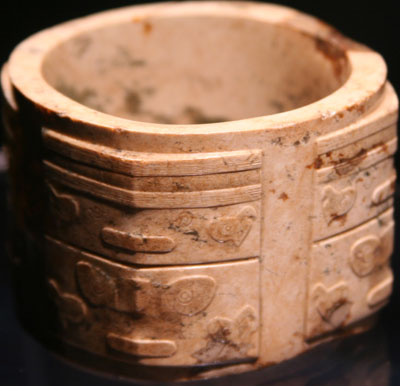Decorative Designs in Chinese Art 中国文物的纹饰
Jade 玉 Early Period 早期
Click on any word to see more details.
Early Period 早期
Many early jade artifacts were discovered from the Hongshan Culture 红山文化 that existed in Northeast China from about 4,700 to 2900 BCE. Later on the Liangzhu Culture (c. 3400-2250 BCE) in the Yantze Delta also produced many jade artifacts. The types of artifacts were mostly small and decorative, such as pendants, bracelets, and hair pins, as appropriate to the use of jade as a medium for art.

The jade dragon pendant above was excavated from a Hongshan Culture site in Inner Mongolia.

There were a number of jade ceremonial artifacts created during the period 6,000 to 2,000 BCE, including the cong 琮 and bi 璧 (a jade disc) that there is no modern equivalent of. The cong above and below are from the Liangzhu Culture 良渚文化 (3,200—2,200).
Chinese
Pinyin English
